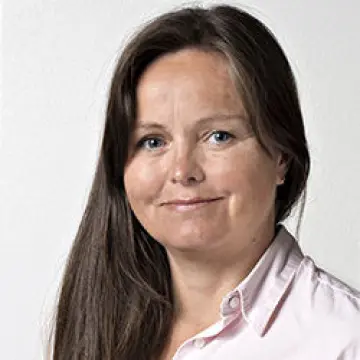THIS ARTICLE/PRESS RELEASE IS PAID FOR AND PRESENTED BY Nofima The Norwegian Institute of Food, Fisheries and Aquaculture Research - read more

Can we use lasers to measure ingredients in food?
The scattering of light from molecules can reveal a lot about the content of the food on the production line in the factory. A new study shows that a technique called Raman spectroscopy offers many possibilities.
In her doctoral work at Nofima, Tiril Lintvedt has investigated whether it is possible to use Raman spectroscopy to measure fatty acid composition in salmon fillets.
This method may also be able to indicate he presence of fat, protein, bone, and collagen inresidual raw materials, specifically carcasses and remnants from chicken and turkey.
Technological development opens up new opportunities
The technological development gives the food industry far better opportunities for process control and product differentiation, quality control, and sorting of raw materials.
Optical sensors, used in spectroscopic measurement methods, are becoming faster, less expensive, and more precise.
There are several different rapid and non-destructive spectroscopic measurement methods. They are suitable for different raw materials and measurement needs.
“Raman technology, which I have studied, has become both more affordable and better," Tiril Lintvedt says.
Detailed measurements directly on the production line are challenging
She explains that it is now possible to make exact measurements over larger areas than before.
However, there are still challenges associated with measuring at exposure times low enough to keep up with the speed of, for example, conveyor belts.
Lintvedt adds that the measurements are affected by large variations in working distance as a result of varying thickness and volume of raw materials.
The challenges she mentions relate to how long exposure time is needed to capture the necessary details in the raw materials.
In order to measure salmon fillets moving along the production line, the measuring instrument, in this case a tubular Raman probe, needs to measure with great detail, precision, and speed.
“There are no inline Raman solutions in the food industry today. Current spectroscopy solutions are not as sensitive to variations in distance or thickness. They also cannot measure with the same level of detail as Raman," Lintvedt says.
For now, therefore, Raman measurements are better suited to rapid measurements alongside the production line, for single samples.
According to Lintvedt, such measurements can also be highly valuable for the industry. They provide opportunities for frequent feedback on quality, and currently, there are no such solutions.
From laboratories to industrial production
Very detailed measurements are needed, right down to the molecular level, to map the fatty acid composition in salmon fillets or the content of fat, protein, bone, and collagen in residual raw materials from chicken and turkey.
Raman spectroscopy is particularly suitable for such measurements.
“In the past, Raman was used in laboratories for the development of expensive products such as medications. With better and cheaper solutions, new opportunities arise for industrial use, including in food production. This potential is what I have explored in my PhD," Lintvedt says.
She states that the results show great potential for the development of new Raman applications in quality documentation, sorting, process analysis, and real-time process control in the food industry.
After completing her PhD, Tiril will continue this research at DigiFoods - Centre for Research-Driven Innovation. There, she will continue working on developing Raman applications for the food industry.
References:
Lintvedt et al. Feasibility of In-Line Raman Spectroscopy for Quality Assessment in Food Industry: How Fast Can We Go?, Applied Spectroscopy, vol. 76, 2022. DOI: 10.1177/00037028211056931
Lintvedt et al. Raman spectroscopy and NIR hyperspectral imaging for in-line estimation of fatty acid features in salmon fillets, Talanta: The International Journal of Pure and Applied Analytical Chemistry, vol. 254, 2023. DOI: 10.1016/j.talanta.2022.124113
Tafintseva et al. Preprocessing Strategies for Sparse Infrared Spectroscopy: A Case Study on Cartilage Diagnostics, Molecules, 2022. DOI: 10.3390/molecules27030873

This article/press release is paid for and presented by Nofima The Norwegian Institute of Food, Fisheries and Aquaculture Research
This content is created by Nofima's communication staff, who use this platform to communicate science and share results from research with the public. Nofima is one of more than 80 owners of ScienceNorway.no. Read more here.
See more content from Nofima:
-
Red algae grown in wastewater from fish-farming facilities could become sustainable salmon feed
-
Pumpkins are good for more than just Halloween decorations
-
This is how temperature affects a salmon's health and growth
-
Study: Omega-3 and zinc is a powerful duo for salmon
-
Fish may turn yellow if frozen too fresh
-
Is it better if food is packaged in plastic or paperboard?





































